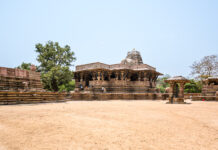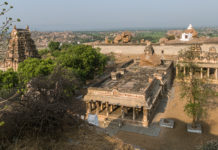The MasterClass Series #9
Shooting Grand Ceilings – Cathedrals, Tombs, and Palaces
Equipment
EOS 5D Mark III
TS-E 17mm f/4 L
EXIF #1
Topkapi Palace, Istanbul
Focal length: 17mm
Aperture: f/4
Shutter speed: 1/30
ISO: 1250
EXIF #2
Budapest Thermal Bath
Focal length: 17mm
Aperture: f/11
Shutter speed: 1/100
ISO: 3200
EXIF #3
Santa Barbara Cathedral, Kutna Hora
Focal length: 17mm
Aperture: f/11
Shutter speed: 1/100
ISO: 3200
EXIF #4
Valencia Cathedral
Focal length: 17mm
Aperture: f/4
Shutter speed: 1/250
ISO: 1000
EXIF #5
Chapel of Chalice, Valencia Cathedral
Focal length: 17mm
Aperture: f/4
Shutter speed: 1/30
ISO: 1000
EXIF #6
Cathedral of Our Lady, Kutna Hora
Focal length: 17mm
Aperture: f/4
Shutter speed: 1/500
ISO: 1000
Editing
Adobe Lightroom Classic CC
From infusing mystique into glamour, let’s now look at shooting grand ceilings.

The story
In most palaces and cathedrals, I make it a point to glance at the ceilings of the grand halls, or the cathedral naves. More often than not, these ceilings match the grandeur of the grand halls. The same holds true even for some Mughal tombs.

You can classify these ceilings in the following broad structural categories:
- Circular – The ceilings of single high domes would fall under this category (Shot 1, Topkapi Palace, the ceiling of one of the three domes of Imperial Council, Dîvan-i Hümâyûn; and Shot 2, Reception of Szechenyi Baths, Budapest)
- Elliptical – cathedrals with a basilica architecture or the inner hall is cross-shaped (Shot 3, the ceiling of Santa Barbara Cathedral, Kutna Hora, the Czech Republic, adorned with coats of arms of municipal guilds that funded its construction.
- Square or polygonal – Churches with non-circular domes display such ceilings (Shot 4, the ceiling of the Valencia Cathedral; and Shot 5, the ceiling of the Chapel of Chalice inside Valencia Cathedral)
- Cross-shaped – Churches or structures with a high central dome, surrounded by smaller domes on four sides (Shot 6, the ceiling of the Cathedral of Our Lady, Kutna Hora, the Czech Republic)

Shooting grand ceilings challenge
These ceilings pose a different challenge. The distance between the floor and ceiling is not large enough for normal lenses to capture the entire grand ceiling or the dome ceiling. Also, these structures are not well-lit. A camera shake blur could also be a concern.

The shots
In most instances, the best way to shoot the ceiling is to lie flat on the floor. Lying flat ensures maximum distance between the camera and the ceiling, helping capture the widest frame. Ensure you position yourself so the camera when pointing up, is in the exact centre of the ceiling. Keep the camera grid on to ensure you shoot the symmetry of the ceiling. The grid helps you achieve a perfect frame.

Sometimes, you cannot access the exact centre under the dome. At such times, you can still achieve symmetry in framing the ceiling and capture its beauty (see Shot 4, Valencia Cathedral)
Given the low-light conditions, pumping up ISO and using slow shutter speed is essential to capture the fine detail of such structures. You need an ultra-wide lens to do justice to such a masterpiece. Hence, high-end equipment may be necessary.

Despite taking precautions of maximising the camera-to-ceiling distance, pumping up the ISO, slowing down the shutter speed, etc., you may still need to shoot bursts. Even when using the ultra-wide lens (remember the inverse of focal length rule?)*, slow shutter speed may cause a camera shake. Shooting a burst ensures you would have some shots free of that shake and are razor-sharp.
Keep these tips in mind to add a spark to your grand ceiling shots. To see a couple of other interesting grand ceilings, click HERE and HERE.
Next week, another post, another pro tip! But for now, aim for the skies!
*Inverse of focal length rule: You can slow down the shutter speed to the inverse of the focal length you are shooting at and still get away with no camera shake.



















